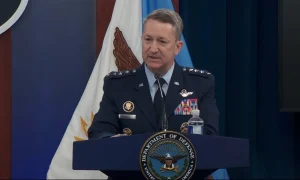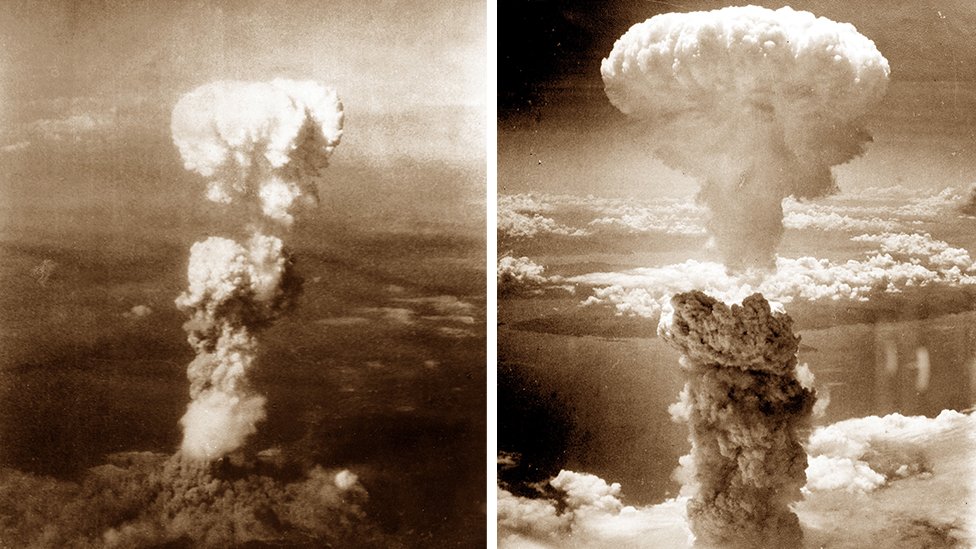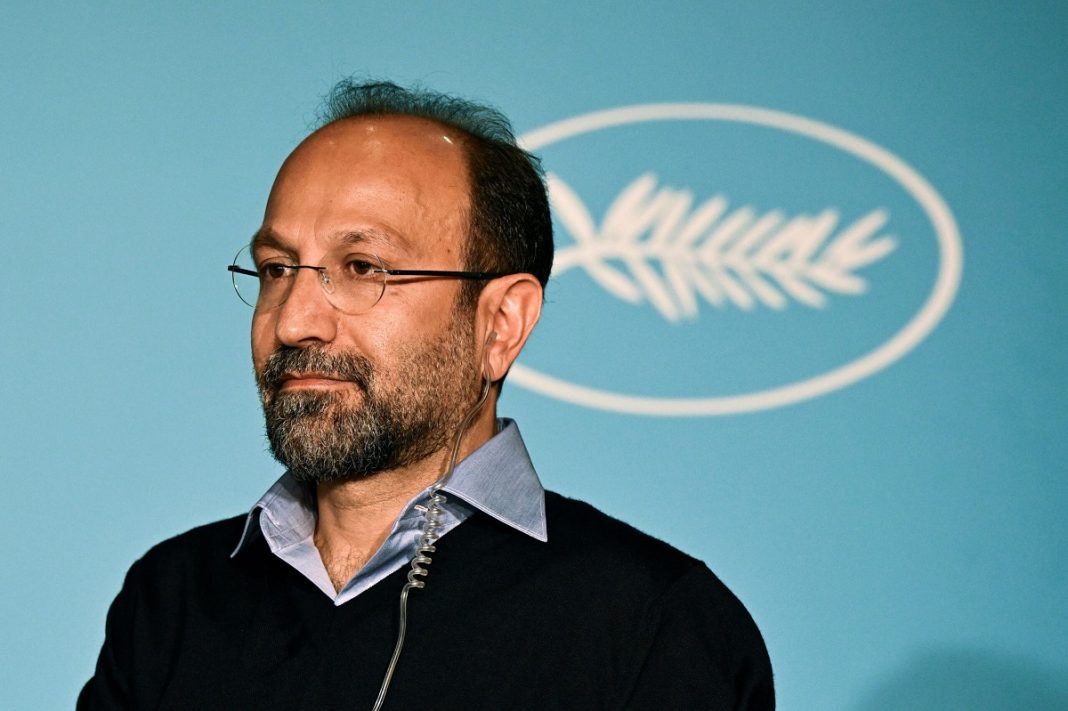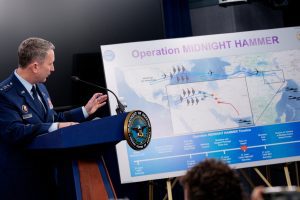Washington D.C. – At the 2025 NATO Summit, President Donald Trump made headlines with his controversial comparison between the recent US On Iranian Nuclear Facilities Attack and the historic atomic bombings of Hiroshima and Nagasaki in 1945. Speaking to the press on Wednesday, Trump claimed that Saturday’s military strikes were as decisive in ending the Israel-Iran conflict as the nuclear bombings were in concluding World War II.
The US On Iranian Nuclear Facilities Attack targeted three major nuclear installations across Iran, marking a significant escalation in Middle Eastern tensions. Trump’s analogy between these conventional strikes and nuclear warfare has triggered widespread criticism from historians, diplomats, and political analysts worldwide.
Details of the US Military Operation

The US On Iranian Nuclear Facilities Attack involved a coordinated assault on Iran’s most critical nuclear infrastructure. American forces deployed bunker-buster bombs specifically designed to penetrate fortified underground facilities, targeting the Fordow, Natanz, and Isfahan nuclear sites simultaneously.
Defence Secretary Pete Hegseth joined Trump in declaring the US On Iranian Nuclear Facilities Attack a “complete success.” However, intelligence assessments present a more nuanced picture of the operation’s effectiveness. While surface structures sustained significant damage, the core components of Iran’s nuclear program—including centrifuges and enriched uranium stockpiles—remained largely functional.
Pentagon analysts revealed that the US On Iranian Nuclear Facilities Attack likely delayed Iran’s nuclear ambitions by only a few months rather than dismantling them entirely. This assessment contradicts Trump and Hegseth’s claims that Iran’s nuclear weapons capability had been “obliterated” through the strikes.
The Controversial Hiroshima-Nagasaki Analogy


Trump’s comparison of the US On Iranian Nuclear Facilities Attack to the 1945 atomic bombings has drawn sharp criticism from multiple quarters. “That hit ended the war. I don’t want to use an example of Hiroshima. I don’t want to use an example of Nagasaki, but that was essentially the same thing, that ended that war,” Trump stated during his NATO Summit address.
The President argued that the US On Iranian Nuclear Facilities Attack achieved similar decisive results, claiming it ended the ongoing Israel-Iran conflict. “This ended that with the war. If we didn’t take that out, they would have been, they’d be fighting right now,” Trump emphasized.
Critics have strongly disputed this characterization of the US On Iranian Nuclear Facilities Attack, arguing that conventional military strikes cannot be equated with nuclear devastation. Laura Jenkins, a historian at the University of Chicago, stated, “There’s no comparing conventional military strikes, however forceful, with the catastrophic and indiscriminate destruction of atomic bombs.”
Intelligence Assessment Contradicts Claims
Despite Trump’s optimistic portrayal of the US On Iranian Nuclear Facilities Attack, intelligence reports suggest a more limited impact. The strikes successfully damaged surface infrastructure but failed to completely neutralize Iran’s nuclear capabilities. Core facilities housing critical equipment and materials remained operational, indicating that Iran could potentially resume its nuclear activities within months.


The US On Iranian Nuclear Facilities Attack specifically targeted Iran’s most advanced nuclear facilities. Fordow, buried deep underground, houses sophisticated centrifuges for uranium enrichment. Natanz serves as Iran’s primary uranium enrichment facility, while Isfahan contains nuclear fuel production capabilities. Despite the strategic targeting, intelligence suggests these facilities retained much of their operational capacity.
Military experts note that the US On Iranian Nuclear Facilities Attack represents a significant tactical operation but falls short of the strategic decimation Trump described. The comparison to Hiroshima and Nagasaki appears particularly inappropriate given the vastly different scales of destruction and lasting impact.
Historical Context and Criticism
The atomic bombings of Hiroshima and Nagasaki in August 1945 represented unprecedented destructive power that instantly killed tens of thousands and left lasting radiation effects for decades. Little Boy, dropped on Hiroshima on August 6, and Fat Man, dropped on Nagasaki three days later, caused immediate devastation and long-term health consequences that persist today.
Survivors, known as hibakusha, continue to experience radiation-related illnesses seventy years after the bombings. The psychological trauma, genetic damage, and increased cancer rates among survivors demonstrate the profound and lasting impact of nuclear warfare—consequences that conventional strikes, regardless of their precision or power, cannot replicate.


Critics argue that Trump’s characterization of the US On Iranian Nuclear Facilities Attack trivializes the unique horror of nuclear warfare. Political scientist Afsaneh Farhadi commented, “What happened in Hiroshima was a singular tragedy. Invoking that to justify modern conventional warfare is both inaccurate and insensitive, especially when the evidence suggests Iran’s programme is still active.”
Geopolitical Implications and Diplomatic Fallout
The US On Iranian Nuclear Facilities Attack and Trump’s subsequent comments have significant diplomatic ramifications. Japan, a key NATO ally, continues to grapple with the trauma of the 1945 bombings, making Trump’s analogy particularly sensitive from a diplomatic perspective.
The US On Iranian Nuclear Facilities Attack occurred amid escalating tensions between Iran and Israel, with both nations exchanging strikes in recent weeks. Iran maintains that its nuclear program serves peaceful purposes, while Israel and its allies express skepticism about Iran’s intentions.
Trump’s comparison risks inflaming already tense relationships in the region while potentially undermining diplomatic efforts to address Iran’s nuclear ambitions through negotiation. The characterization of the US On Iranian Nuclear Facilities Attack as equivalent to nuclear warfare may complicate future diplomatic initiatives and alliance relationships.
Military Analysis and Strategic Assessment


Military analysts emphasize that while the US On Iranian Nuclear Facilities Attack demonstrated American military capabilities, its strategic impact remains limited. The operation successfully showcased precision targeting of hardened facilities but failed to achieve the comprehensive destruction Trump claimed.
The US On Iranian Nuclear Facilities Attack utilized advanced bunker-buster technology designed specifically for deep underground targets. However, Iran’s nuclear infrastructure includes redundant systems and dispersed facilities that enable program continuation despite significant damage to individual sites.
Strategic experts note that the US On Iranian Nuclear Facilities Attack may have achieved temporary tactical objectives while potentially strengthening Iran’s resolve to accelerate its nuclear program through alternative means. The operation’s limited long-term impact contrasts sharply with Trump’s claims of decisive victory.
Closing Statements
The US On Iranian Nuclear Facilities Attack represents a significant military operation with complex geopolitical implications. While Trump’s comparison to Hiroshima and Nagasaki has generated controversy, intelligence assessments suggest the strikes achieved limited strategic objectives. The ongoing debate over the operation’s effectiveness and Trump’s inflammatory rhetoric highlights the challenges of addressing Iran’s nuclear ambitions through military means while maintaining diplomatic relationships and historical sensitivity.

